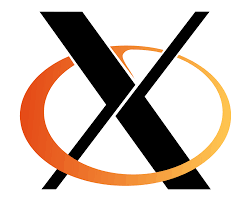A display server is a software that manages the graphical output and user input on a computer system. It is responsible for rendering the windows, managing the input devices such as keyboards and mice, and handling the graphical effects such as transparency and animations. The display server is the layer between the operating system and the user interface, providing a bridge between the two and allowing the users to interact with their computer using a graphical interface.
There are several display servers available for Linux, but the two most commonly used are Xorg and Wayland. While Xorg has been the standard display server for Linux for over 30 years, Wayland has emerged as a newer, more modern display server in recent years. The choice between Xorg and Wayland comes down to a range of factors including compatibility, performance, security, and customization options. In this article, we will compare and contrast Xorg and Wayland to help you understand the differences and similarities between the two and determine which one is the best fit for your needs.
Xorg

Xorg, also known as X11, is a display server that has been the standard for Linux systems since the early 1990s. Xorg provides a stable and mature platform for handling GUIs and input devices on devices that run on Linux. It supports a wide range of hardware devices and is widely used in desktop environments such as GNOME and KDE.
Advantages
Legacy Compatibility
One of the key advantages of Xorg is its compatibility with legacy applications and hardware devices. It has been around for a long time, and many applications and hardware devices have been designed to work specifically with it. This means that if you have legacy hardware or applications that require Xorg, you can be sure that they will work reliably.
Customization
Another advantage of Xorg is its flexibility and customization options. Xorg allows the users to configure the display and input settings according to their preferences, making it an ideal choice for advanced users who want the complete control over their system. This highly customizable nature allows the users to install different window managers and desktop environments to create a customized Linux desktop experience.
Drawbacks
Security
One of the biggest issues with Xorg is its security vulnerabilities. Xorg is a large and complex software package that has been around for a long time which means that it has accumulated many security vulnerabilities over the years. While many of these vulnerabilities have been patched, it is still a likely target for hackers who are looking to exploit the weaknesses in Linux systems.
Slow Architecture
Another issue with Xorg is its architecture. Xorg is a monolithic display server which means that it is responsible for handling all of the graphical and input functions in a Linux system. This can make Xorg slower and less efficient than the other modern display servers like Wayland which are designed to be more modular and lightweight.
Wayland
Wayland is a new display server that was developed as an alternative to Xorg. Wayland is designed to be more modern, lightweight, and more secure than Xorg. It has gained popularity in recent years among Linux enthusiasts and developers because of its improved features over Xorg.
Advantages
Security
One of the key advantages of Wayland is its security. Wayland is designed with security in mind, and it has a much smaller codebase than Xorg which means that there are fewer potential vulnerabilities for hackers to exploit. Wayland also offers support for sandboxing and isolation which makes it more difficult for malicious applications to interfere with the other applications on the system.
Performance
Wayland is designed to be more lightweight and efficient than Xorg which means that it can provide a smoother and more responsive user experience. Wayland is also more modern than Xorg, with better support for hardware acceleration and high-resolution displays.
Disadvantages
Legacy Compatibility
One of the biggest issues with Wayland is its lack of compatibility with legacy applications and hardware devices. Because Wayland is a newer technology, many applications and hardware devices have not been designed to work with it yet. This can make it difficult to use Wayland if you rely on legacy software or hardware.
Customization
Customization is another area where Wayland falls short when compared to Xorg. With Xorg, users have a wide range of customization options that are available to them, including the ability to install different window managers and desktop environments. In contrast, Wayland is still a relatively new technology, and many customization options are not yet available.
Comparison
Conclusion
Overall, the choice between Xorg and Wayland comes down to your specific needs and preferences. If you rely on legacy applications or hardware devices, or if you need a high degree of customization and flexibility, Xorg may be the better choice for you. However, if security and performance are your top priorities, or if you are using modern hardware and software, Wayland may be the better option.
It is worth noting that some Linux distributions, such as Fedora and Ubuntu, have already started to default to Wayland instead of Xorg in recent years. This is a reflection of the growing popularity and maturity of Wayland, as well as the increasing security concerns that are associated with Xorg. However, it is still possible to switch back to Xorg if needed, so the users who prefer Xorg can still use it if they wish.
In conclusion, both Xorg and Wayland have their advantages and disadvantages, and the choice between them depends on your specific needs and preferences. Xorg provides a stable and mature platform for handling GUIs and input devices on Linux systems with a high degree of customization and compatibility with legacy software and hardware. Wayland, on the other hand, is a newer and more modern display server that offers better security and performance, but with fewer customization options and less compatibility with legacy software and hardware. Ultimately, the decision between Xorg and Wayland comes down to which features are most important to you and how you use your Linux system.


